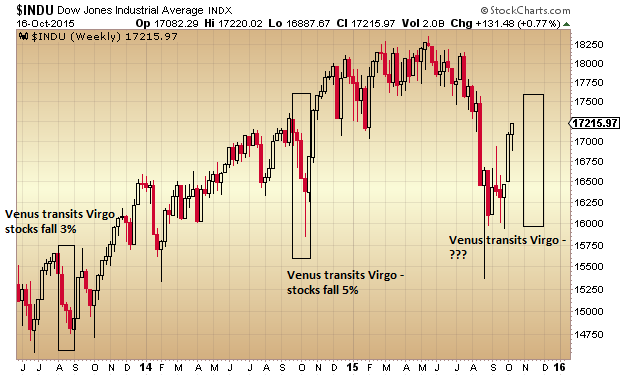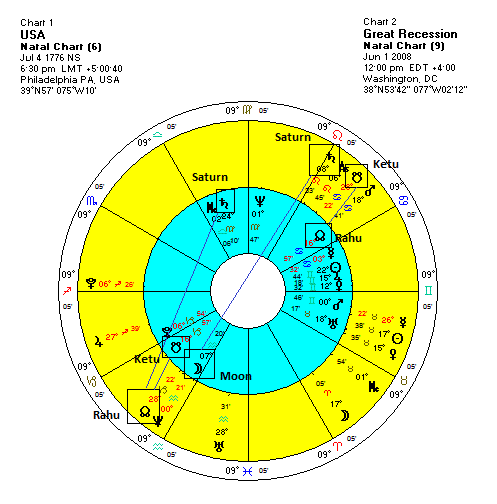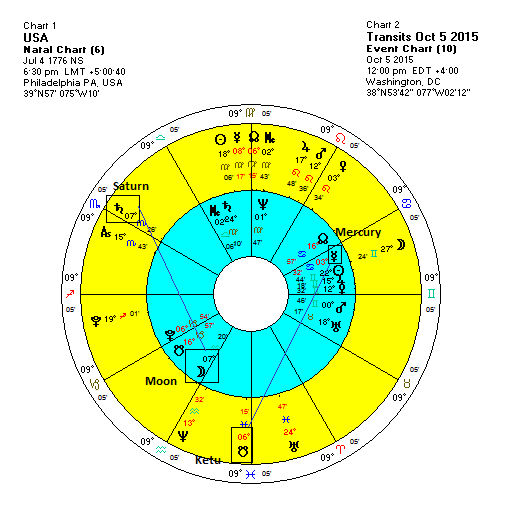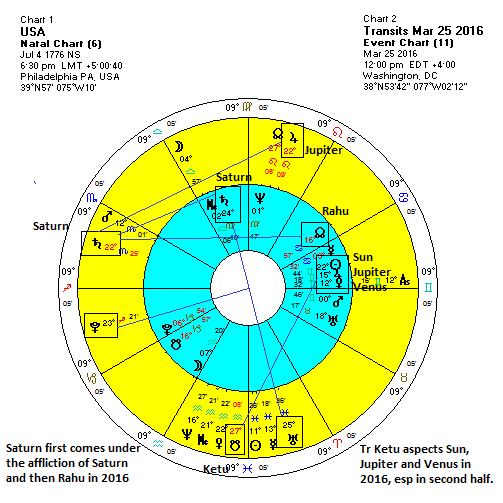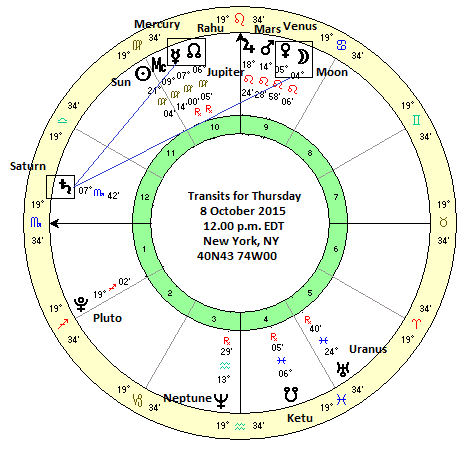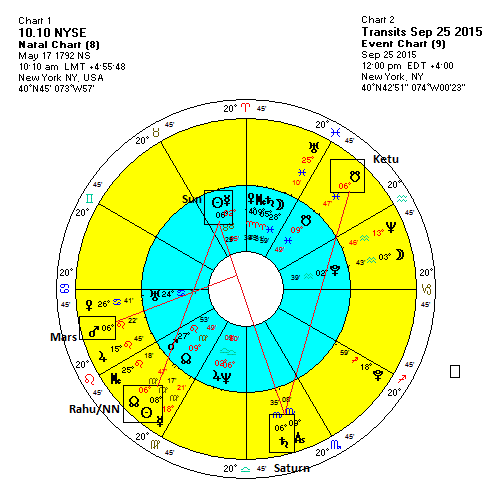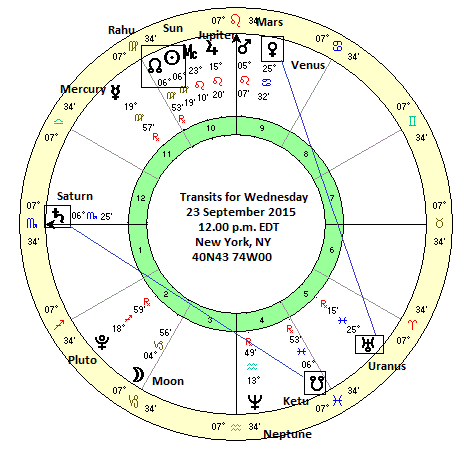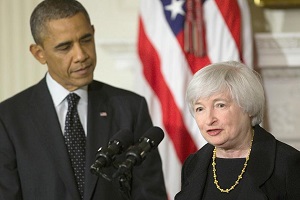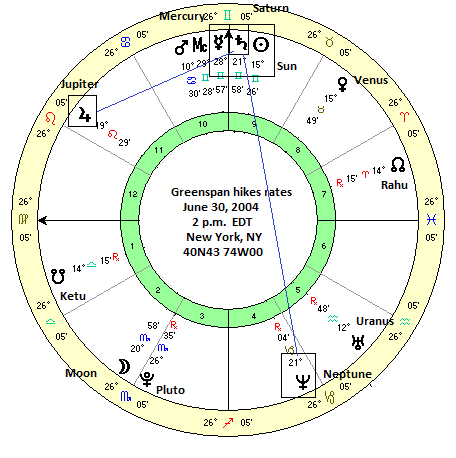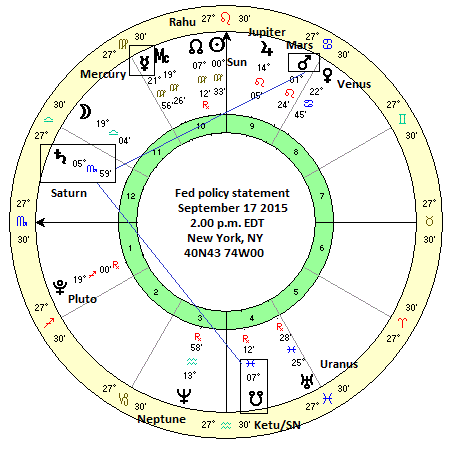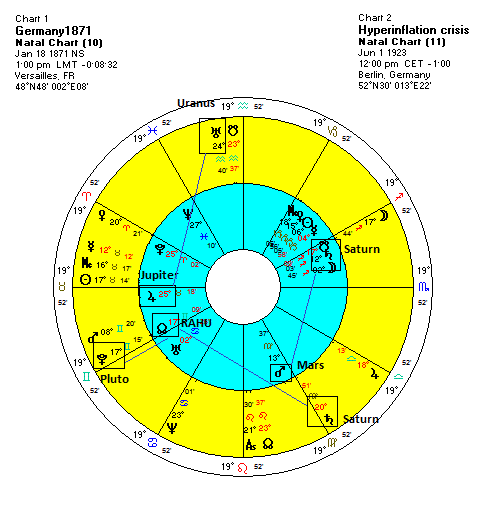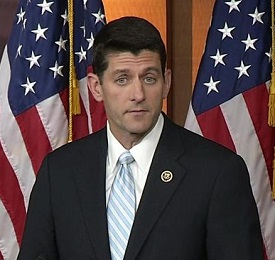 (26 October 2015)
And so it begins again. The annual political wrangling to raise the US
debt ceiling is now in full swing as both parties vie for advantage
before the November 3rd deadline. Since the US government must rely on
borrowed money to stay solvent, Congress's failure to raise the debt
ceiling would cause a default. Previous debt ceiling crises occurred in
2011 and 2013 and brought sharp declines in the stock markets before
11th-hour compromises were finally found. As always, Republicans are
loathe to sign off on the ever-increasing debt load and are seeking
fiscal concessions from the Democrats. Of course, many Republicans also
do not want to to see the US default on its debt as the financial
consequences could hurt the whole country in the form of financial
instability, lowered credit ratings and higher borrowing costs on its
bonds.
(26 October 2015)
And so it begins again. The annual political wrangling to raise the US
debt ceiling is now in full swing as both parties vie for advantage
before the November 3rd deadline. Since the US government must rely on
borrowed money to stay solvent, Congress's failure to raise the debt
ceiling would cause a default. Previous debt ceiling crises occurred in
2011 and 2013 and brought sharp declines in the stock markets before
11th-hour compromises were finally found. As always, Republicans are
loathe to sign off on the ever-increasing debt load and are seeking
fiscal concessions from the Democrats. Of course, many Republicans also
do not want to to see the US default on its debt as the financial
consequences could hurt the whole country in the form of financial
instability, lowered credit ratings and higher borrowing costs on its
bonds. As an added wrinkle, this year's game of political chicken in Washington, DC will feature a new Speaker of the House. Paul Ryan will likely be formally elected on Thursday as he replaces outgoing John Boehner. Ryan faces an immediate test of his leadership skills as the right-wing of the GOP is more willing to risk the negative consequences of a default and may be less likely to back down in any negotiations. Moreover, the Tea Party wing has serious reservations about Paul Ryan as the new Speaker and may work to undermine his leadership, perhaps using the debt ceiling fight for this purpose.
So what the chances of a potentially disruptive default? The astrological indications suggest they are actually substantially higher than one would think. Normally, both sides engage in the requisite levels of brinkmanship but the worst case scenario is avoided. Most recently, this means that spending concessions are wrought by the Republicans in exchange for signing off on raising the debt ceiling. This year I'm less sure we will get a repeat of this well-rehearsed script. Alternatively, we may see a replay of 2011, when there was a failure to compromise by the deadline and we saw stocks plunge on a theoretical default. But thanks to some arm-twisting and creative accounting, the US managed to step back from the abyss a few days after the passing of the deadline.
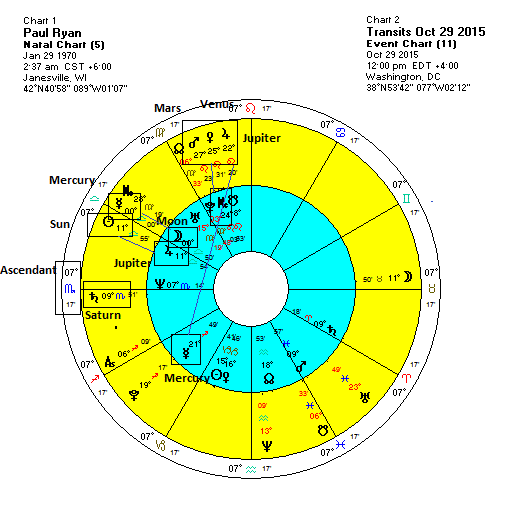
The horoscope of incoming Speaker Paul Ryan offers some clues about the chances for discord right at the time of the deadline on November 3rd. Initially, he will likely be approved as House Speaker this Thursday, October 29th. He thereby is benefiting from the triple conjunction of Venus (25 Leo), Mars (27 Leo) and Jupiter (22 Leo) transiting very close to his unequal 10th house cusp at 24 Leo (i.e. the Midheaven or MC). This is very much in keeping with we would expect since the 10th house symbolizes status and achievement. Jupiter also casts a near-exact 120 degree aspect to Mercury (21 Sagittarius) which is the lord of the 11th house of gains.
The Wisconsin-based Congressman Ryan has now reached his highest level of political success with this election as House Speaker, the 3rd highest office in the land. But his ascension has not been easy or smooth, a fact perhaps reflected in the prominence of transiting Saturn (9 Scorpio) just past his Ascendant (7 Scorpio). This Saturn-Ascendant conjunction connotes hard work, heavy responsibilities and the possibility that he may not enjoy his fair share of public recognition. On Thursday, the day of the House vote on his Speakership, 11th lord Mercury conjoins his natal Moon while the Sun conjoins Jupiter. Those are usually very winning planets and exactly what one would expect for a promotion of this sort.
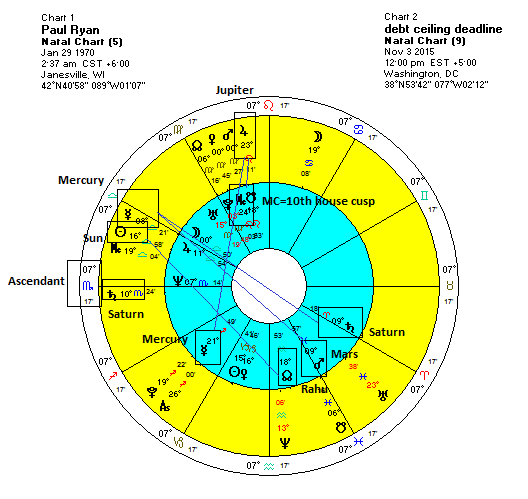
But the situation becomes more complicated by the time of the debt ceiling deadline next week on Tuesday, November 3rd. Jupiter is now beginning to separate from its aspect with Mercury and opens the door to the possibility that Ryan's good fortune may be ending. Transiting Mercury (8 Libra) comes under close opposition aspect of Saturn (9 Aries) and 8th house aspect cast from natal Mars (9 Pisces). This not only suggests that a deal is less likely at the deadline, but it also indicates a disappointment or setback.
With the transiting Sun (17 Libra) also in aspect with natal Rahu (18 Aquarius), there is some reason to think that there could be some unexpected developments that produce unwanted outcomes around this issue. Perhaps the Venus-Rahu conjunction at 6 Virgo on November 8th is a more likely time for favorable outcomes for Ryan in this matter. The Venus-Rahu conjunction occurs just one degree away from the cusp of the 11th house and suggests some kind of advancement or victory.

We can also see the potential for problems with this debt ceiling debate in the USA horoscope. Both Venus and Mars are both due to enter sidereal Virgo on the 3rd of November. This will form a tight alignment with the Mars-Neptune square in the USA chart. Mars is the planet of conflict and violence so the odds are greatly heightened for some manifestation of this Mars energy in the first week of November. While this alignment doesn't necessarily signify a failure of the debt ceiling negotiations and a default, it increases the risk of this outcome. Neptune's role here may well introduce an element of subterfuge and deception in the proceedings.
It is tantalizing to think that that this debt ceiling deadline may somehow be related to the entry of Venus and Mars into Virgo on November 3rd. As I have noted last week, this transit of Venus through Virgo has been quite negative for the stock market over the past six years. While no single factor enjoys a 100% correlation with market movements, the fact that this transit occurs on the same day of the debt ceiling deadline is food for thought. It is another reason to assume a more cautious stance with the markets in early November.
Weekly Market Forecast
Stocks generally rose last week as China's central bank cut rates in an effort to boost growth while the ECB talked up the possibility of more stimulus. The Dow climbed 2% on the week to 17,646. India's Sensex also rose 1% finishing the week at 27,470. As I suggested in last week's stock market forecast, we saw some modest declines early last week on the Moon-Saturn pattern. We also got some of the anticipated gains from the Mercury-Venus-Pluto alignment later in the week.
This week seems more difficult than last week. We did get some gains in Asia on Monday on the strength of Sunday's Venus-Jupiter conjunction. But now this benefic pairing is weakening, there may be less positive energy available for markets to tap into. US markets finally lower. Tuesday's Sun-Saturn and Merucury-Mars alignments look more negative. The Fed makes its latest policy announcement on Wednesday but there is an absence of close aspects that day so I'm less inclined there will be a sharp market reaction. But the Moon-Saturn opposition on Thursday and even into Friday indicates more disappointment and an elevated possibility of declines. Overall, this is not shaping up to be a great week for stocks.

